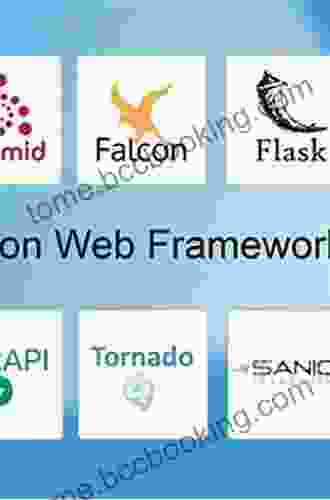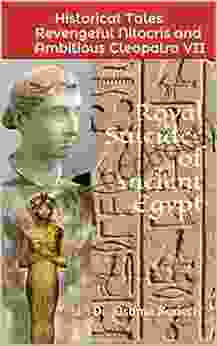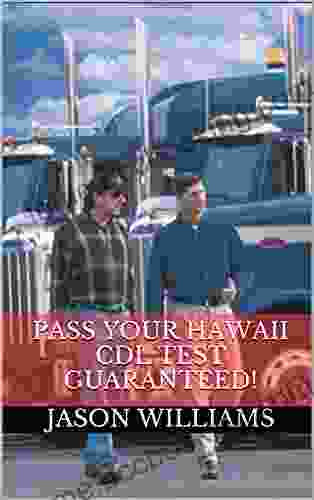Harness the Power of Fully-Fledged Frontend Web Framework in Python: A Comprehensive Guide to Django

In the ever-evolving landscape of web development, Python emerges as a formidable force, powering a plethora of dynamic and interactive websites. Django, a Python-based web framework, stands as a testament to this prowess. With its comprehensive features and intuitive design, Django empowers developers to craft sophisticated web applications with ease. This comprehensive guide will delve into the intricacies of Django, unlocking its potential for building robust and scalable web solutions.
Unveiling the Django Ecosystem
Django is more than just a framework; it's an ecosystem that encompasses a wide array of tools and libraries specifically tailored for web development. This ecosystem includes:
4.3 out of 5
| Language | : | English |
| File size | : | 30746 KB |
| Text-to-Speech | : | Enabled |
| Screen Reader | : | Supported |
| Enhanced typesetting | : | Enabled |
| Print length | : | 364 pages |
* Object-relational Mapping (ORM): Django's ORM simplifies database interactions, enabling developers to interact with databases in a Pythonic manner. * Template System: The built-in template system provides a concise and powerful syntax for generating HTML responses. * Authentication and Authorization: Django's robust authentication and authorization system provides secure access control for your applications. * Form Handling: The framework streamlines form handling, making it easy to validate and process user input. * Deployment Utilities: Django offers a comprehensive suite of deployment utilities, ensuring seamless deployment across various platforms.
Step-by-Step Django Project Walkthrough
To showcase the practical application of Django, let's embark on a step-by-step walkthrough of building a simple blog application:
1. Project Initialization and Configuration
* Create a new Django project using the 'django-admin startproject' command. * Configure project settings, such as database and template paths.
2. Model Definition
* Define the Blog model using Django's ORM, specifying fields for title, content, and timestamp.
3. Views and URL Routing
* Create views for handling blog-related requests, such as listing, creating, editing, and deleting posts. * Define URL patterns to map URLs to specific views.
4. Templates and Forms
* Create HTML templates for displaying blog posts and a form for creating new posts. * Implement form validation to ensure valid user input.
5. Database Migration and Deployment
* Migrate the database schema based on the defined models. * Deploy the application to a web server of your choice using Django's deployment utilities.
Key Features and Advantages of Django
The allure of Django lies in its exceptional features and advantages:
* Rapid Development: Django's batteries-included approach and intuitive design accelerate development, saving developers countless hours. * Code Reusability: The framework promotes code reusability through components like apps, models, and templates. * Database Agnostic: Django supports multiple database systems, including MySQL, PostgreSQL, and SQLite, providing flexibility in data storage. * Security-minded: Django prioritizes security, employing features like CSRF protection, SQL injection prevention, and secure password hashing. * Extensibility: Django's modular architecture allows for seamless integration of third-party applications and custom code.
Real-World Applications of Django
The versatility of Django extends to a wide range of real-world applications, including:
* Content Management Systems (CMSs): Django powers popular CMSs like Wagtail and Mezzanine. * E-commerce Platforms: Django's robust features make it suitable for building online stores like OsCommerce and Django Shop. * News and Media Websites: Django drives news websites like The Onion and The Guardian. * Social Networking Platforms: Django forms the backbone of social networking sites like Instagram and Pinterest.
Best Practices for Django Development
Maximize the effectiveness of Django development by adhering to industry best practices:
* Use Python Virtual Environments: Isolate Django projects and packages to avoid conflicts. * Follow the DRY (Don't Repeat Yourself) Principle: Minimize code duplication by reusing components and templates. * Leverage Middleware: Enhance application functionality by implementing custom middleware for tasks like user authentication and request processing. * Test Thoroughly: Ensure application correctness and robustness through comprehensive unit and integration testing. * Optimize Performance: Employ caching, database optimization techniques, and load balancing to improve application performance.
Django stands as an indispensable tool for web developers seeking to harness the power of Python for frontend web development. Its comprehensive features, intuitive design, and extensive ecosystem empower developers to create robust, scalable, and secure web applications with unparalleled efficiency. This guide has provided a deep dive into Django, unlocking its potential for web development success.
Embark on your Django journey today and experience the transformative power of a fully-fledged frontend web framework in Python. With Django at your disposal, the possibilities are limitless for crafting sophisticated and engaging web applications that captivate users and drive business success.
4.3 out of 5
| Language | : | English |
| File size | : | 30746 KB |
| Text-to-Speech | : | Enabled |
| Screen Reader | : | Supported |
| Enhanced typesetting | : | Enabled |
| Print length | : | 364 pages |
Do you want to contribute by writing guest posts on this blog?
Please contact us and send us a resume of previous articles that you have written.
 Book
Book Novel
Novel Page
Page Chapter
Chapter Text
Text Story
Story Genre
Genre Reader
Reader Library
Library Paperback
Paperback E-book
E-book Magazine
Magazine Newspaper
Newspaper Paragraph
Paragraph Sentence
Sentence Bookmark
Bookmark Shelf
Shelf Glossary
Glossary Bibliography
Bibliography Foreword
Foreword Preface
Preface Synopsis
Synopsis Annotation
Annotation Footnote
Footnote Manuscript
Manuscript Scroll
Scroll Codex
Codex Tome
Tome Bestseller
Bestseller Classics
Classics Library card
Library card Narrative
Narrative Biography
Biography Autobiography
Autobiography Memoir
Memoir Reference
Reference Encyclopedia
Encyclopedia Eddie Merrins
Eddie Merrins Elinor Lipman
Elinor Lipman Vukota Boljanovic
Vukota Boljanovic Grace Onyema
Grace Onyema Ed Brodow
Ed Brodow Edgar Saltus
Edgar Saltus Edafe Okporo
Edafe Okporo Dynamo
Dynamo Elizabeth Bradfield
Elizabeth Bradfield E S Tilley
E S Tilley Edward Marston
Edward Marston Elisa Murray
Elisa Murray Edward Jay Epstein
Edward Jay Epstein Elizabeth Dowling Taylor
Elizabeth Dowling Taylor Eduardo Strauch
Eduardo Strauch Marcus Butler
Marcus Butler Edward D Hess
Edward D Hess Elijah Nicholas Wilson
Elijah Nicholas Wilson Fabrice Moussus
Fabrice Moussus Stephanie Manley
Stephanie Manley
Light bulbAdvertise smarter! Our strategic ad space ensures maximum exposure. Reserve your spot today!
 Arthur C. ClarkeFollow ·4.5k
Arthur C. ClarkeFollow ·4.5k W.H. AudenFollow ·10.1k
W.H. AudenFollow ·10.1k Dalton FosterFollow ·5.5k
Dalton FosterFollow ·5.5k Ezekiel CoxFollow ·5.7k
Ezekiel CoxFollow ·5.7k Julian PowellFollow ·5.4k
Julian PowellFollow ·5.4k Mark MitchellFollow ·9.1k
Mark MitchellFollow ·9.1k Efrain PowellFollow ·3.1k
Efrain PowellFollow ·3.1k Elias MitchellFollow ·2.3k
Elias MitchellFollow ·2.3k
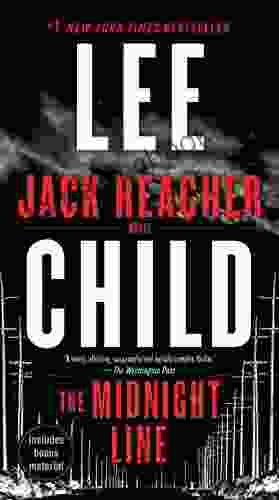
 Clarence Brooks
Clarence BrooksUncover the Secrets in the Dead of Night: Dive into Lee...
Step into the heart-stopping world of Jack...
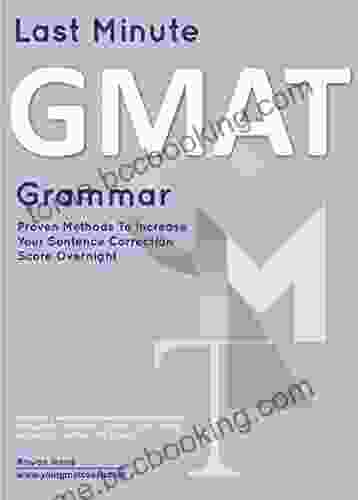
 Clay Powell
Clay PowellAce the GMAT Grammar Section: Your Last-Minute...
The GMAT is a challenging...

 Salman Rushdie
Salman RushdieEmbark on a Heartwarming Journey with "The All Together...
: Immerse yourself in the charming world of...
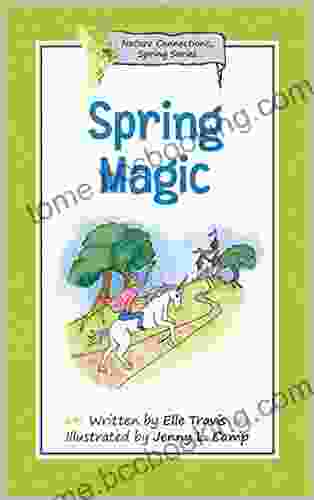
 Dawson Reed
Dawson ReedSpring Magic: Stunningly Illustrated Fun for Kids to...
Welcome to the Enchanting World of...
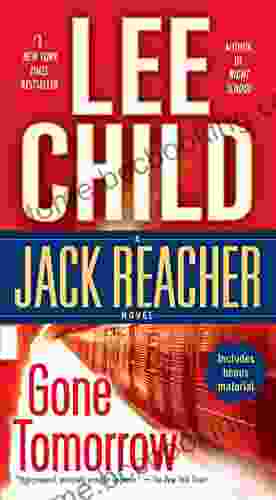
 Bradley Dixon
Bradley DixonGone Tomorrow: A Gripping Thriller by Lee Child that Will...
In the literary realm of thrillers, few...
4.3 out of 5
| Language | : | English |
| File size | : | 30746 KB |
| Text-to-Speech | : | Enabled |
| Screen Reader | : | Supported |
| Enhanced typesetting | : | Enabled |
| Print length | : | 364 pages |


